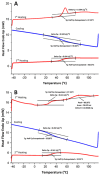Hard Candy Production and Quality Parameters: A review
- PMID: 38946739
- PMCID: PMC11214042
- DOI: 10.12688/openreseurope.16792.1
Hard Candy Production and Quality Parameters: A review
Abstract
Hard candies are sugar confections comprising mainly water and sucrose. Corn syrup, colorants and flavors are also usually added to hard candy formulations. The production of hard candy requires heating of the ingredients to very high temperatures to reduce moisture content and subsequent cooling to obtain a solid matrix. Cooling of the mixtures achieves the final, well known glassy state of the products. In this glassy state, the system is kinetically stable and molecular mobility is restricted, providing longer shelf life to hard candies. There are, however, several factors affecting the final quality and consumer acceptance of hard candies. Production methods and parameters, initial formulations as well as storage conditions all play a crucial role in the physicochemical, textural and sensory properties of hard candies. Addition of colorants and flavors also plays a vital role in the final quality. Although hard candy production is a simple process with few production stages, even small changes in the method of production and process parameters may induce substantial changes in the final product characteristics. Additionally, storage conditions such as temperature and humidity can change the product properties leading to graining and stickiness which are the two major problems for hard candies during storage. Both production and storage conditions should therefore be carefully chosen and controlled for desirable hard candy properties. This review addresses the general production methods and considers process parameters and quality parameters of hard candy products. Moreover, a comprehensive review of the related hard candy literature is also presented. The majority of hard candy reviews focus on specific methods and processes, but this review will present a more general frame on the subject.
Keywords: Hard candy; characterization; crystallization; glucose; storage; sucrose.
Copyright: © 2024 Ozel B et al.
Conflict of interest statement
No competing interests were disclosed.
Figures





Similar articles
-
Moisture and shelf life in sugar confections.Crit Rev Food Sci Nutr. 2010 Feb;50(2):162-92. doi: 10.1080/10408390802248833. Crit Rev Food Sci Nutr. 2010. PMID: 20112158 Review.
-
Investigating the crystallinity of hard candies prepared and stored at different temperatures with low field-NMR relaxometry.J Sci Food Agric. 2025 Jan 15;105(1):489-497. doi: 10.1002/jsfa.13847. Epub 2024 Aug 28. J Sci Food Agric. 2025. PMID: 39194086
-
Challenges in confectionery industry: Development and storage stability of innovative white tea-based candies.J Food Sci. 2020 Jul;85(7):2060-2068. doi: 10.1111/1750-3841.15306. Epub 2020 Jun 24. J Food Sci. 2020. PMID: 32579746
-
Development of an Antioxidant-Rich Sugar-Free Plantain Candy and Assessment of Its Shelf Life in a Flexible Laminate.Food Technol Biotechnol. 2024 Jun;62(2):162-176. doi: 10.17113/ftb.62.02.24.8141. Food Technol Biotechnol. 2024. PMID: 39045296 Free PMC article.
-
Current Innovations in the Development of Functional Gummy Candies.Foods. 2023 Dec 25;13(1):76. doi: 10.3390/foods13010076. Foods. 2023. PMID: 38201104 Free PMC article. Review.
Cited by
-
Designing, Characterization, and Optimization of Nystatin Loaded Mucoadhesive Spanlastical Hard Candy Lozenges as a Treatment of Oral Candidiasis: An in-vivo Study on Rats.Drug Des Devel Ther. 2025 Apr 28;19:3293-3321. doi: 10.2147/DDDT.S504768. eCollection 2025. Drug Des Devel Ther. 2025. PMID: 40322040 Free PMC article.
-
Physicochemical and Sensory Properties and Antioxidant Activity of Xylitol Candies Containing Yuja (Citrus junos) Peels or Pulp.Foods. 2024 Jul 29;13(15):2396. doi: 10.3390/foods13152396. Foods. 2024. PMID: 39123587 Free PMC article.
References
-
- Avaltroni F, Bouquerand PE, Normand V: Maltodextrin molecular weight distribution influence on the glass transition temperature and viscosity in aqueous solutions. Carbohydr Polym. 2004;58(3):323–334. 10.1016/j.carbpol.2004.08.001 - DOI
-
- Banwell CN, McCash EM: Fundamentals of molecular spectroscopy. (4th ed.). McGraw-Hill, London,1994.
-
- Boland AB, Delahunty CM, Van Ruth SM: Influence of the texture of gelatin gels and pectin gels on strawberry flavour release and perception. Food Chem. 2006;96(3):452–460. 10.1016/j.foodchem.2005.02.027 - DOI
-
- Boonyai P, Howes T, Bhandari B: Instrumentation and testing of a thermal mechanical compression test for glass-rubber transition analysis of food powders. J Food Eng. 2007;78(4):1333–1342. 10.1016/j.jfoodeng.2006.01.005 - DOI
Publication types
LinkOut - more resources
Full Text Sources
